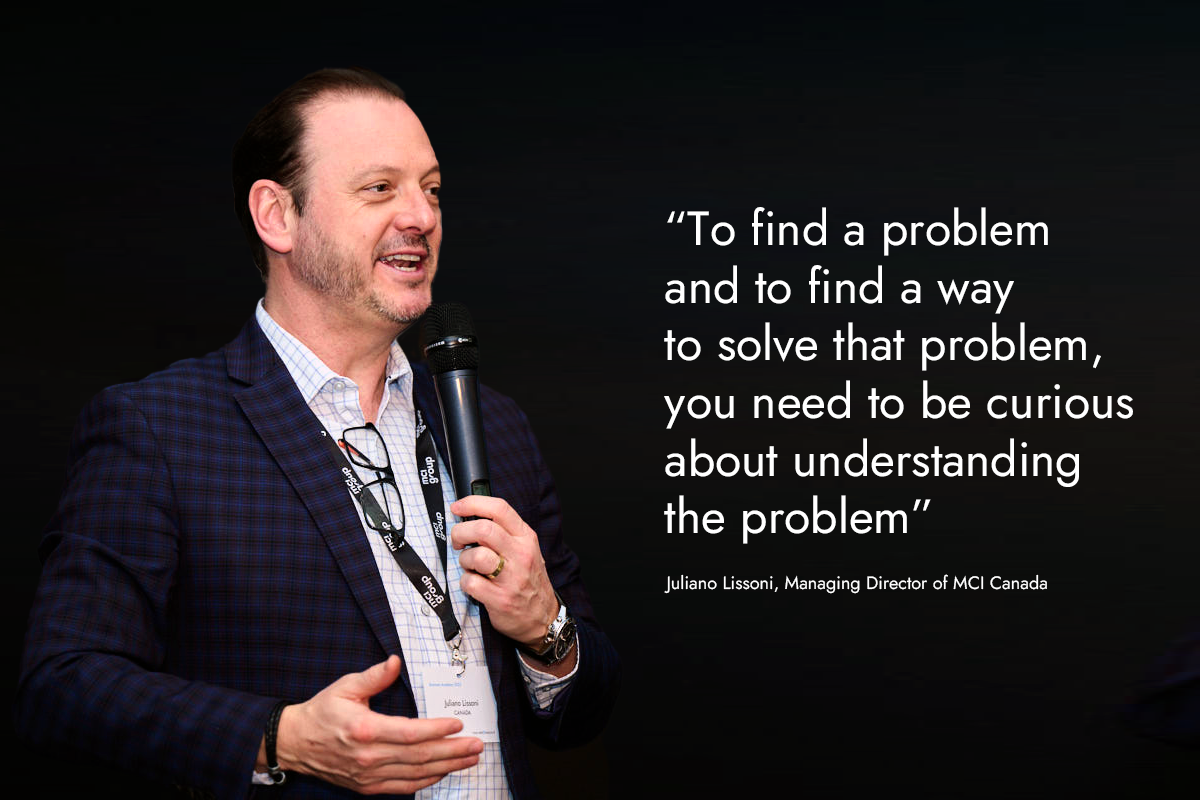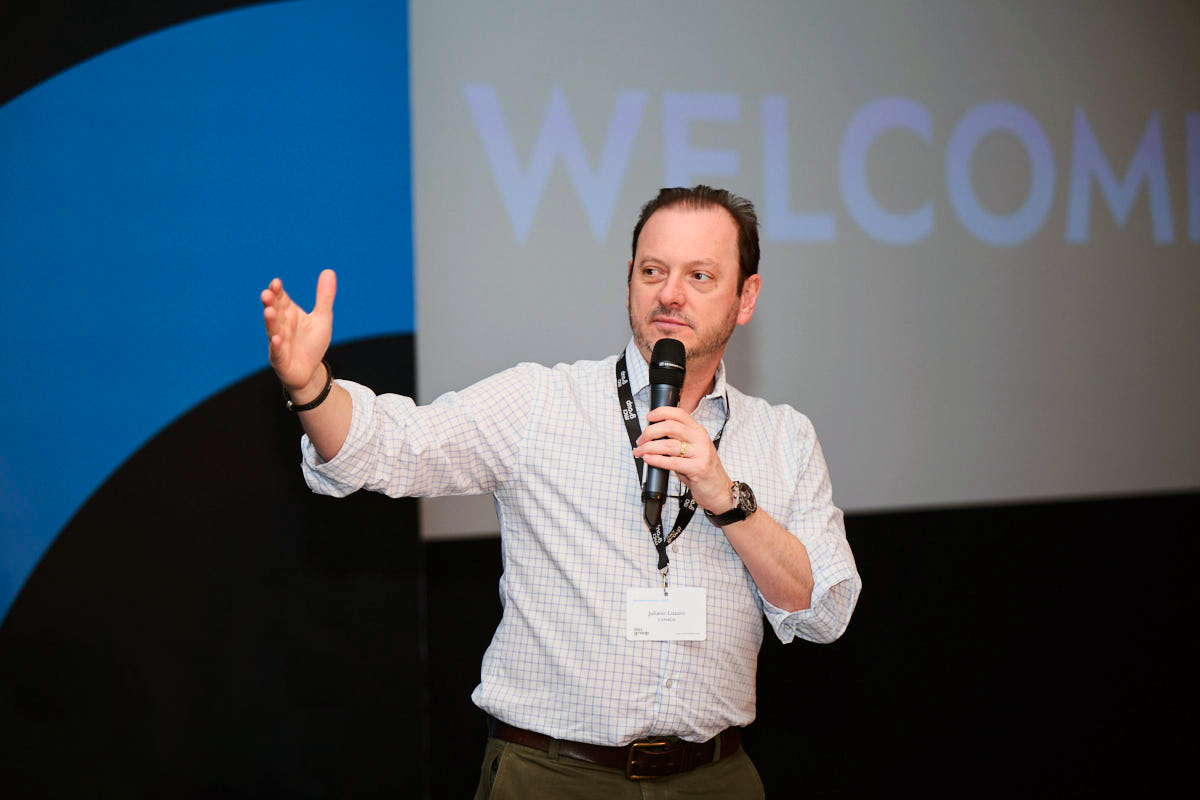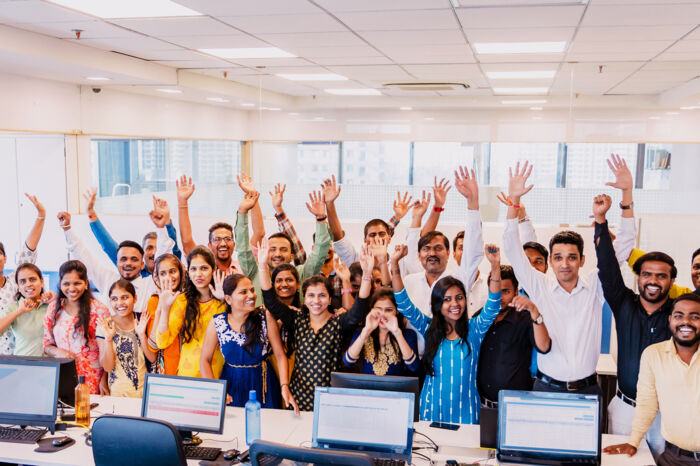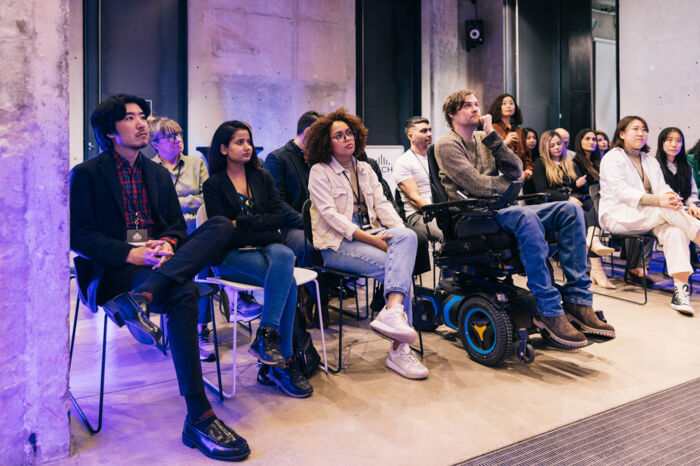
What needs to exist for a culture of innovation in an organisation?
JL: Arthur Schopenhauer was a German philosopher who said that we humans take the limit of our minds as the limit of the world. What does that tell you? It tells us that we are all full of biases, our knowledge, our experience, the way we came through life… And that creates our emotional bank account on the things we know, right?
So, we tend to think that the things we know are the correct things and we are full of assumptions.
The companies that develop a culture of innovation are the ones that say, “OK, let's forget that we know this and let's create some hypotheses about how things could be and should be – how customers would like things to be. And then they go and they test those hypotheses.
Experimentation is nothing but testing hypotheses. It is a process you create using different ‘what ifs’ – What if we do this? What if we do that? And usually, you then do AB testing, and the market tells you whether your idea is great, or not. And then you replace your assumptions by hypothesis.
Look at the most important innovations that we have right now, in the palm of our hands – like the way that Uber was invented, the way Airbnb was invented, the way many companies came from nowhere by simply responding to a need. Something didn’t exist and someone thought, well, what if? Well, let's try!
What do you mean by “good failure”?
JL: There are always three levels of organisational culture. The first is how things are done in a particular company, how the organisation is perceived from the outside. The second level is the “whys” behind that. And the third level is where you find the roots that created that culture, what went into the why and then went into the visible aspect.
Usually, the roots are based on the personality of the founder, or on the way the CEO or president leads a company. These can be deeply ingrained. For example, after Walt Disney passed away, every time a decision needed to be made within the company, the executives would ask themselves “How would Walt do this?”
This is a reflection of the roots that form that organisational culture. Think about the main principle that the creation of Disney World was based on. When Walt asked his engineer to build the highest perimeter wall possible, the engineer asked, “Oh you don't want people outside seeing what is happening inside?”
Disney explained that his motivation was the opposite: he didn’t want people inside looking to the world outside. That was the immersive experience he wanted. And he didn’t want them to be “clients”, he wanted them to be guests. This is something that the company perpetuates in its culture of high-level service and customer care, customer experience and so on and so forth.
To create a culture of innovation, you need to redefine some of those parameters of organisational culture. And you need to redefine the way you look at failure. If you don't allow the space for people to make good failures and the right type of mistakes, those parameters will never change.
As Professor Adam Grant wrote in Originals: How Non-Conformists Move the World, “Practice makes perfect, but it doesn't make it new.” So, if you look only to efficiency, if you only reward efficiency, if you only promote based on efficiency, you're never going to have that culture of innovation. Efficiency is important but somewhere on that you need to have someone thinking on the day after tomorrow.
How does one balance the importance of good failure and the risk of bad failure?
JL: MCI is a company that is comfortable to explore the unknown in a very controlled way. What I like about MCI’s processing of innovation is that, yes, you can fail, but it has to be a controlled experiment. And this is what successful companies do. They control the experiments. They know exactly what they have to do and how they are going to make sure that experiment doesn’t run away, does not damage the company, and we see this on a daily basis.
Assessing intelligent risk means asking “What is at stake here if this fails?” If nothing much, then we should try; if a lot is at stake, then we don't.
Organisations like Amazon and Uber do thousands of experiments a day, but you don't see it? They explore the new things they put in front of you, and they track what happens. What was your behaviour, how did that work out? If it did then they say, “Well, this is good, people like it – let's push it out.” The digital world allows you to do these experiments in a faster way.
Can you give us some insight into innovations that MCI Canada has developed?
This is my methodology for innovation: IWS. The I stands for improvement; W for wrapping, and S for selling.
Improvement covers the innovations that the customer doesn't see – improved processes. For example, MCI Belgium created Trace to deliver information from the project manager into the system in real time. That’s an innovation, an improvement, that increases productivity.
Wrapping is something you create that eventually becomes part of your offering. Perhaps you start bundling the innovation into your offering and selling them together. In Canada, everybody talks about sustainability in our industry but when you look at event organisers’ and meeting planners’ list of priorities, sustainability is #9 out of nine.
Selling refers to the business model. A new business model is the toughest type of innovation because you're going to have to kiss a lot of frogs before you find the prince here!
We ran a design-thinking process to talk to people and try to understand not what people want but what people feel. I'm a big fan of the design thinking methodology to generate innovation. So, we asked event planners and organisers, how they defined their priorities and how they look at sustainability.
It turned out that they were so focused on health and safety in this post-Covid world, with staff turnover, with inflation, with rising costs. The response to sustainability was that it's incredibly important, but they don't have time for it.

So we created a free, do-it-yourself tool called Events for Change. It’s an online methodology that runs in a simple platform with some machine learning and AI behind it. It’s a questionnaire that takes five to seven minutes to answer and gives you a score on 50 topics inside of 10 criteria on sustainability, diversity, equality, inclusion and belonging, and awards points which indicate how sustainable your event is going to be, and what you could add to improve.
It became a wrapping innovation because frequently the clients say, “I love it. I need your help to implement these improvements, and then it becomes part of our offering.”
We are busy experimenting with another wrapping innovation called Smart Certificate. It is based on the blockchain solution and is the most user-friendly and inexpensive platform to generate digital certificates that are immutable and traceable. Worldwide, there is a substantial amount of people faking their certificates.
MIT was the first high level education institution to adopt this blockchain technology for immutability and traceability. So, we are partnering with the same company that developed their platform and we are piloting that now in the association market. Time will tell if it is a useful tool or not. But that's another wrapping solution. It's not going to be a stand-alone business model for MCI, but it could be something we bundle together with our other offerings.
There are also failures. You keep testing and tweaking, and you scale what works. We have a tokenization process that we developed for engagement, and we see that there’s potential, but we also see that we are still miles away from the product that is going to actually be good for the markets.
And is it an innovative culture that helps your team define clients’ pain points, and helps them solve these with innovations like the ones you mention above?
JL: We no longer have clear lines separating the sectors anymore. When people say, “think outside the box” … what is the box? There’s no box anymore because the sector has become so blurred. The word I like to use is “curiosity”.
We have to have a curiosity for exploration, and the curiosity to look at things and say, “Is this working? Is this working the way it could work? Is this the best way to do this? Is this the best way to solve this problem?” Curiosity is the antidote for Arthur Schopenhauer’s dilemma.
If you enhance your curiosity, you're going to expand the limits of your mind and you won't confuse the limits of your mind for the limits of the world, because you are in constant exploration.
That's the starting point. To find a problem and to find a way to solve that problem, you need to be curious about understanding the problem.
Many people go through their work like automated machines – they keep doing what is required but, even if they are fantastic at what they do, some will never ask, “Is there a better way to do this? What if we change that? What if we change this?”
To be innovative, you have to cultivate a curious mindset.
NOTE: Juliano is the co-author of "Aprenda com as falhas: como as empresas de sucesso inovam usando a experimentação" (Learn from Failure: How Successful Companies Innovate Using Experimentation), an Amazon best seller in the Corporate Finance category. With his co-author Fernando Serra, Juliano researched the differentiating elements that make some companies more innovative. They discovered that the difference is a culture that “not only tolerates the error, but that encourages experimentation and discovery, because while companies are effective in managing the core business, they also launch themselves into the search for new products or services, and they do so through a process that replaces certainty with hypothesis.
“These innovative companies, then, assume a posture of constant experimentation and discovery, which, in turn, establishes the new parameters that will become the basis of the innovative organisational culture.”




